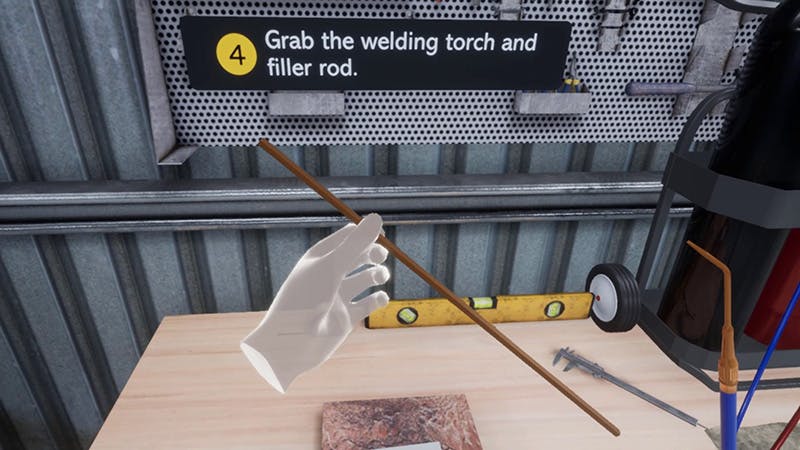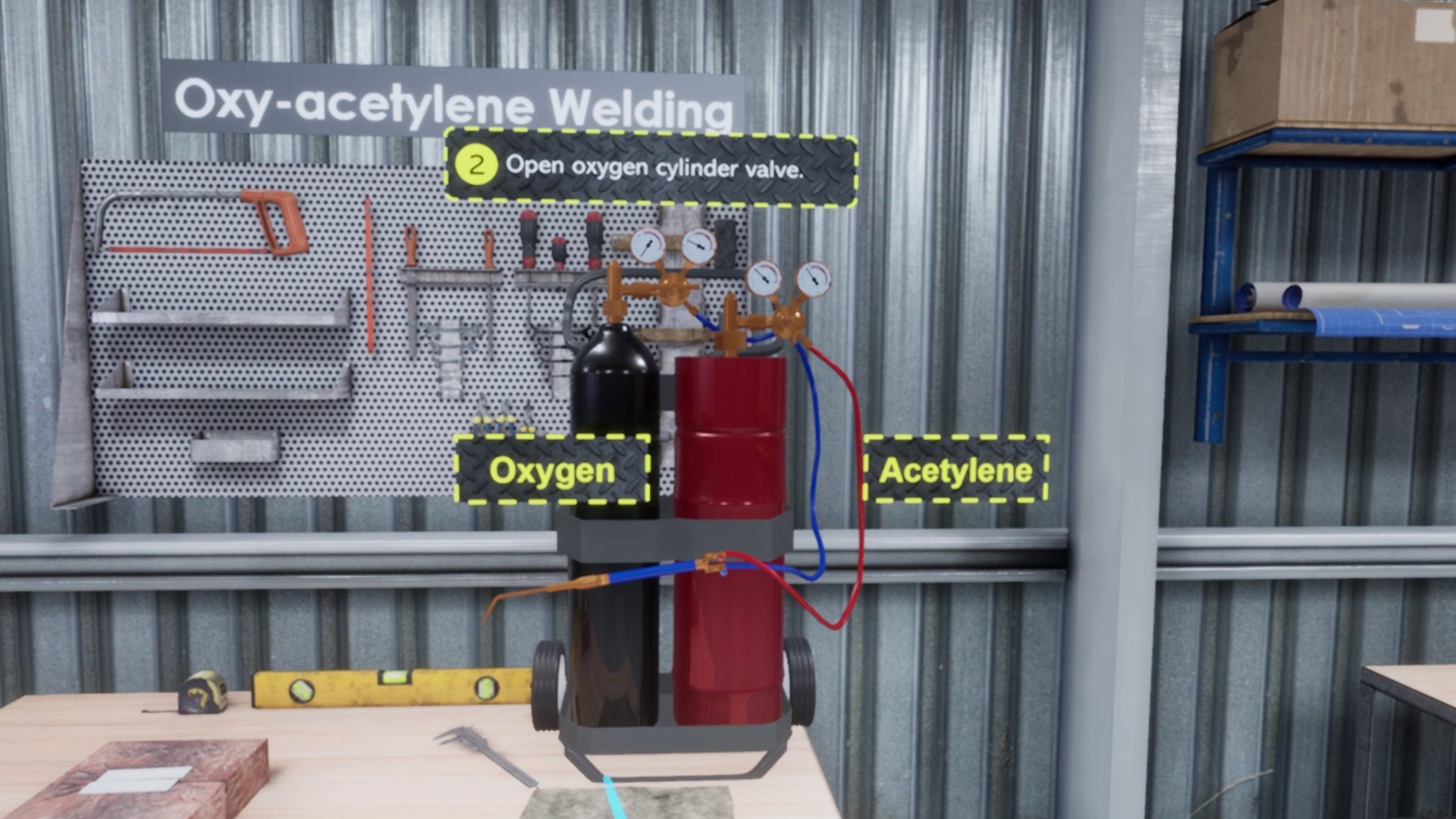Virtual reality (VR) is now a reality. Another reality is that a hands-on learning experience is one of the best ways to not just learn a concept or skill but also to retain and, when required, put into practice. These two realities are highly interconnected because virtual reality now provides a learner the opportunity to learn a concept or skill by being part of the particular environment. For example, a medical student learning surgery can be part of a virtual surgical procedure, a trainee pilot can fly a virtual aircraft, fire safety drills can be performed in virtual scenarios, and many more such instances.
The effectiveness of these training programs, however, depends upon the development and execution of the training material. Virtual reality training is a part of eLearning but it goes way beyond the mere text, image, audio, video, and numerous mouse clicks. VR programs place the learner right at the heart of the learning program where the learner is not just a spectator but an active participant. To enable a hiccup-free ride through the course it is imperative to create a smooth run.
Creating a VR Training Program
What do you think of when planning an eLearning course? Concepts should be introduced with the necessary context setting; content should suit the understanding of the target audience; navigation should be simple; concepts and skills must be well explained and demonstrated; tasks to perform require clear instructions, and the feedback must be accurate and relevant.
When it comes to a VR training program, the basics remain the same but since it is a completely different setting, slightly varying factors come into play. We name these factors as Context, Task, Affordances, Application, and Feedback.
Let us discuss each one individually. We shall closely refer to an example of a simple task like ‘welding’ to better explain these concepts.

Context: The first impression is the last impression – so goes the saying. To a great extent it applies to digital learning modules too, in this case a VR training session. The first images that meet the eyes will set the tone of the upcoming session. Then and there the learner will form an opinion of whether the course is going to be interesting or dull. Since VR training is heavily dependent on visuals the context setting has to be as close-to-reality as possible. The aim here should be to teleport the learner from the real world to the virtual world so effectively that the virtual becomes the real. In other words, create an immersive experience. Photorealism plays an important role here. Other factors that contribute to an effective immersive experience are efficient use of lights and sounds.
When we take the example of a session on ‘how to perform a welding task’ what would be the best way to set the context of a course? We cannot just jump into a learning session all of a sudden. It is important to get the learner into a set-up that prepares him/her for the upcoming session. It is like easing into a course, something like a warm up exercise. So how do we introduce the task of welding to a learner? We take the learner into an appropriate setting, in this case a workshop.
The workshop environment sets the context of the course and preps up the participant to approach the session with enthusiasm and vigor.
Task: A VR training session aims at educating the participant in a particular concept or skill. It is not merely a walk in the park. Rather, it is like taking a walk but also performing activities along the way. But these activities need to be spelled out and, in most cases, demonstrated to the learner. Remember, we are trying help the learner learn something new. This makes it crucial for the course development team to clearly and crisply explain the concepts and skills and, along the way, do a proper show-and-tell session of the task at hand.
Well defined and demonstrated tasks go down well with learners and help them retain information being shared. This will further help them replicate the steps when asked to do so.
When it comes to our ‘welding’ task, steps like enabling gas valves, controlling flame length, and joining of two metal pieces must be presented as lucidly as possible.
Affordances: As mentioned earlier, a learner in a VR training is more of a participant. There are skills and concepts to be learned as well as to be performed. In order to perform tasks, the participant must be afforded instructions about navigations and screen elements/objects that help perform the task. We call these elements and objects Affordances.
In any VR training, affordances play a critical role in user experience. For example, when we go back to our welding task, the affordances are in the form of the ‘Help’ panel explaining the navigation and interactivity details. The lever of the gas valve is an affordance. The guiding line that instructs and enables the participant to perform the task successfully is an affordance.

Application: We have set a context to the course, demonstrated the task to be learned and understood, and provided all the affordances that help perform the task. Now comes the element where the actual participation is required. The participant needs to perform the task that has been exhibited to him/her. This is not only a test of the participant’s understanding and retaining capabilities but, more importantly, the developers’ test. Have we, as a developer, demonstrated and guided the participant so effectively that the he/she is able to individually perform the task successfully? Are the instructions clear enough to enable the participant to retrace the demonstrated steps of the task?
Coming back to our welding example, we need to be sure that we demonstrated the steps with clarity so that the process was well comprehended to be replicated.
Feedback: The feedback is the last element in the process of creating a VR training program. Its significance is no less than all the other steps. This is where the participant gets to know how they have fared. They are quite likely to falter at some stage in performing the task. A minor miss may lead to varying results. It is also possible that a participant performs the task perfectly well. Results will vary with each participant and so will the feedback. Unlike regular eLearning courses, when it comes to a VR training program it is possible to give personalized feedbacks for each learner. Based on this feedback the task can be revisited, retaken, and successfully performed. It may take a couple of tries but every learner gets a chance to rectify each mistake or incorrect step. Since the feedback comes with an explanation it is easier and better to understand the error and work upon setting it correct.
VR training programs are becoming the next big thing in the field of learning and development. Enabling learners to graduate to the level of participants, gather experiences, perform tasks, feel free to make mistakes, experiment with ease, and practice repeatedly irrespective of the line of work is helping not only participants but also trainers. While participants get a hands-on practical training of concepts and skills, trainers benefit from the remarkable, easy-to-deliver training material. VR has just started making inroads into learning and development and is already making a powerful impact.
Contact Us to create engaging and immersive online learning content or to know more about our immersive architecture.




